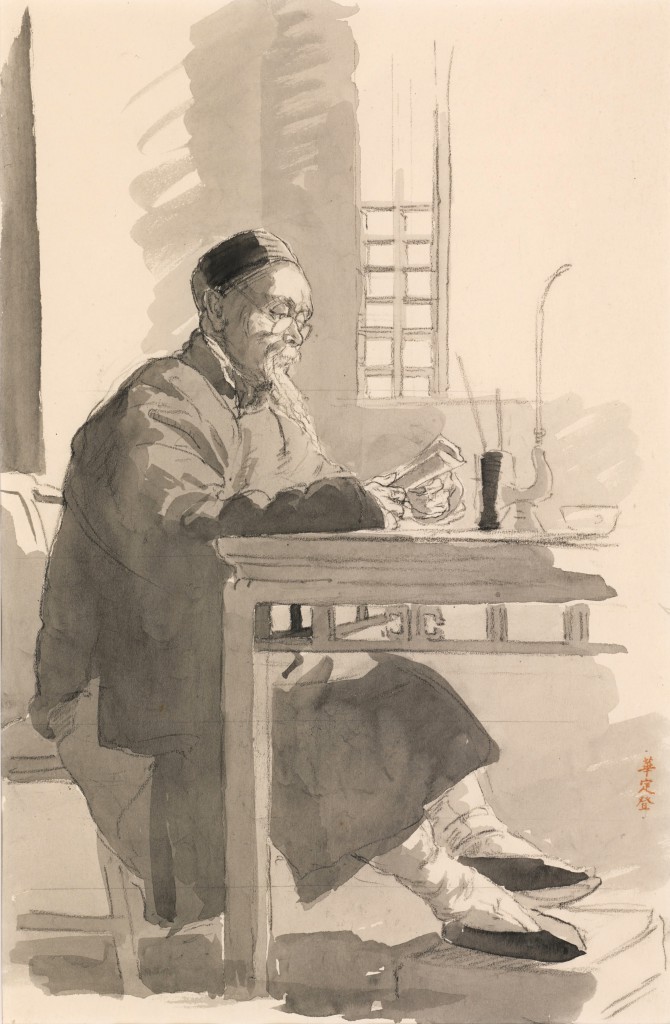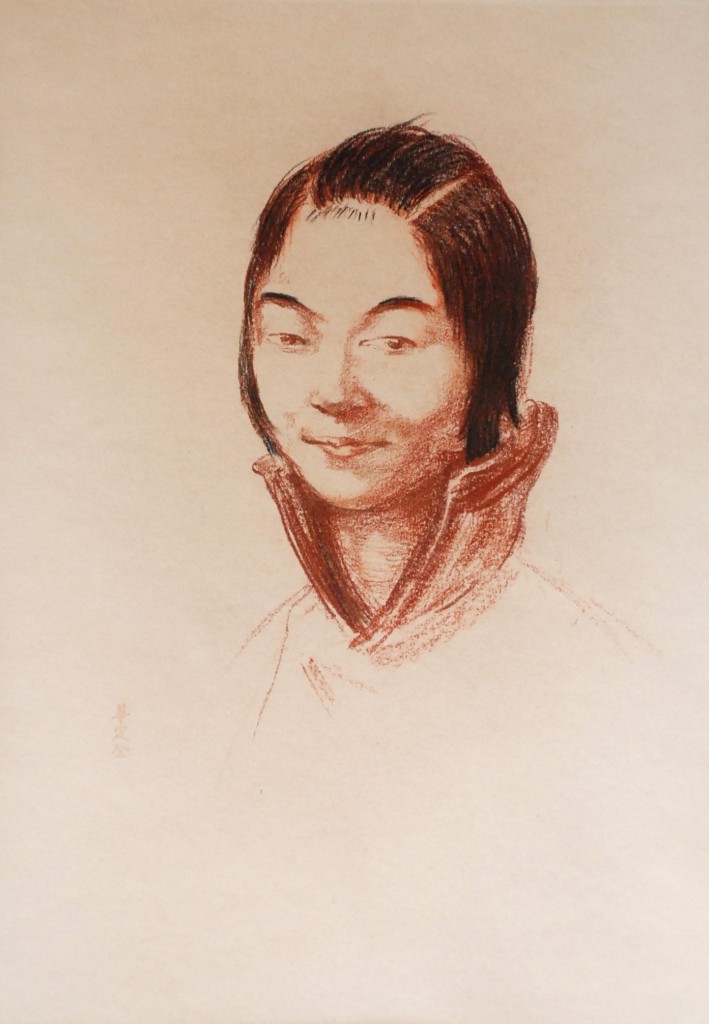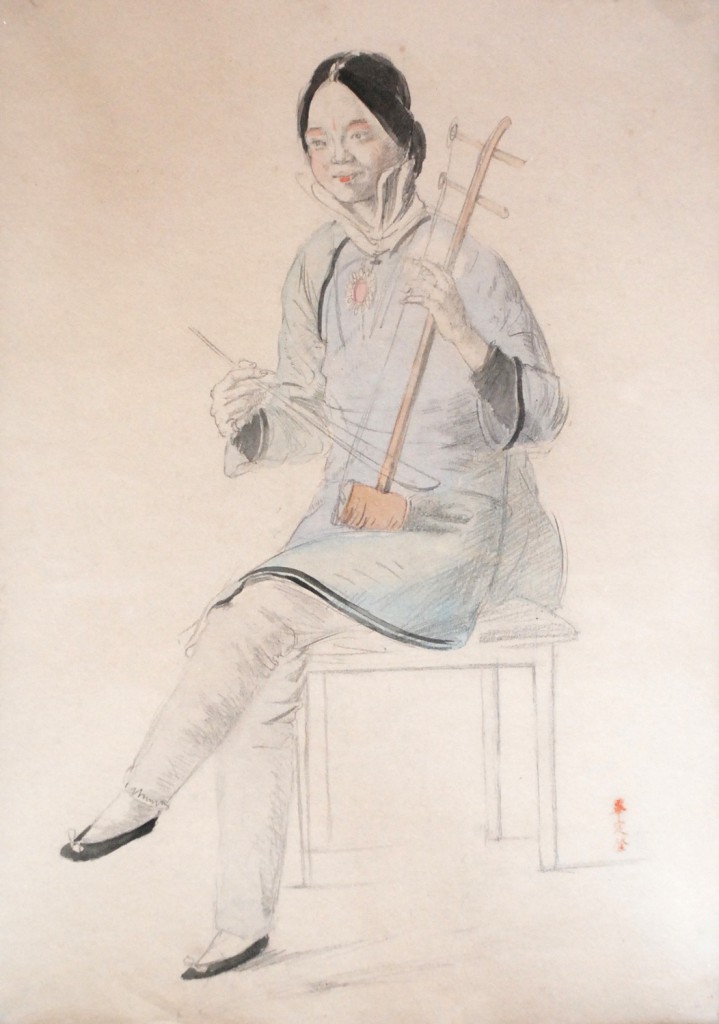Reviews of Vera’s Chinese Studies Carfax Gallery December 1910
The Morning Post Friday 16 December
In his lecture the other afternoon at the Grafton Galleries Mr Walter Sickert said “Distortion or deformation was beautiful and interesting when it was in the hands of people who had acquired skill, and whose hand perhaps wavered because it was a human hand and not a machine.” The work of the wavering hand is, as we have already said, very evident at the Post-Impressionist show, and its degrees of beauty were aptly illustrated in the remark of two ladies. “Look,” said one, “isn’t that figure hideous?” “Yes,” said the other, “but it is beautiful compared with the rest.”
Another and more salient remark of Mr Sickert enables us to draw attention to an exhibition of Chinese studies at 24, Bury Street. He said there were always great humility and a certain weight in the drawing of a great master. We do not say that Miss Vera Waddington is a great master, but her drawing has more of the qualities named by Mr Sickert than of the “Glibness” of Matisse. She has acquired considerable skill in removing deformity from her drawing. Her hand scarcely ever wavers from the line of health. It is sometimes nervous from humility, but, in the main, it is solid with the weight of knowledge. Her drawing moves with the gaiety of the Singing Girls (6 and 22), is mournful with the woes of the Tragic Actor (3), and how admirably it expresses the attempt of a Chinese Charles Hawtrey (21) to tell the truth. The naïve smile of “Light Comedy” (9) recalls the witchery of Lottie Venne or Ada Reeve and the Gardener’s son suggests that the original may develop into a second Confucius or Li Hung Chang. Most of these drawings are tinted in attractive style. But we like best her chalk sketches. A “young Mandarin” (27) and “Asleep” (39) have real power of technique, insight into character, and much of the emotion of strenuous life. Note the attitude of the child in 39. Every part of it indicates sleep, and no Western Madonna in a picture looks on the Child with more tender interest and wonder than does the woman in this drawing. Excellent, too, are “The Grandfather” (35), “A Sage in Winter” (31), and “The Toilet”. Miss Waddington’s sense of colour is not distinguished. Her essays in oil fail as paintings, though in expression of types they are admirable, notably the Leonardo-John “Singing Girl.”
The Daily Telegraph Tuesday 13 December
Under the title “Chinese Studies” Miss Vera Waddington is showing at this gallery a number of watercolours, drawings and studies of considerable interest. She has had the courage to look at China and the modern Chinese with her own eyes – a feat by no means as easy as it sounds; the result being to give a new and sympathetic view of the still to us so mysterious inhabitants of the Flowery Land, which, moreover, recommends itself as based on truth. These drawings lack something of the authority and concision which we somehow have learnt to expect from everything Chinese or concerned with the Chinese; but they make amends by just this quality of subtlety in observation and novelty in truth. Miss Waddington presents her women and children, above all with a certain wistfulness, a certain softness and air of submission to Fate, that is charming, and we are made withal to feel that there is something in reserve –something given, but also something withheld from the foreigner. Good examples illustrating our meaning are such figure-studies as “Hsiao Ching, Little Bright the Singing Girl,” “the Bride,” “Two friends,” “The Grandfather,” and “Light Comedy.” (Extract)
The Observer Sunday 18 December
Miss Vera Waddington, whose very remarkable “Chinese Studies” are to be seen at the Carfax Gallery in Bury Street, St James’s, uses her pencil with a delicacy of touch and at the same time with a vital expressiveness which justify the conclusion that she acquired her style either from the teaching of the Slade School or of one of the two great draughtsmen who have issued from that school – Mr A. John and Mr W. Orpen. Not only has every touch of her pencil a definite life giving function but Miss Waddington knows exactly where to leave off and how to obtain the maximum of expressiveness with the right economy of means. Whether she has ever been a pupil of Mr John I cannot say, but a drawing like (no 13) “waiting” points at least to an intimate acquaintance with Mr John’s masterly figure drawings.
Although the appeal of Miss Waddington’s “Chinese Studies” rest upon her profound sympathy with the subjects treated, it is necessary to insist upon her excellent technical equipment, upon that perfect training of eye and hand which enables her to record with spontaneous directness what she has observed with a true artist’s sympathetic perception. Most European painters that have used the Far East as a sketching ground have been so interested in the fact that the Chinese wear pigtails and have slanting eyes that they have quite overlooked the more important fact that the Chinese are human beings with human emotions as active as our own…….
It has been left to Miss Waddington to show us in her sketches the quite peaceful home life of the Chinese, the dainty grace of blossoming womanhood with its innocent vanities, the intensely human love of old age for childhood ….(Extract)


